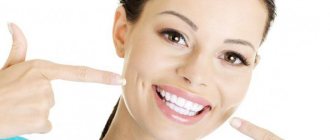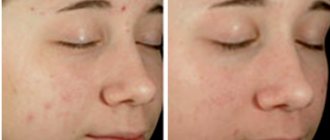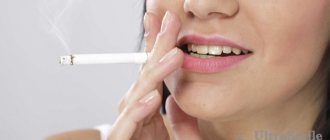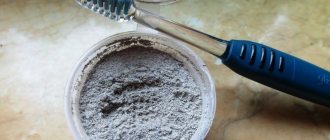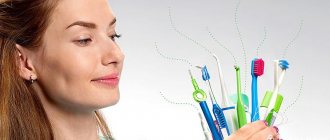Strong and beautiful teeth are every person’s dream. That is why special attention should be paid to proper oral hygiene. Toothpaste is an integral part of daily dental and gum care. It can not only maintain oral health, but also reduce the manifestations of various dental diseases. And today we will tell you everything about toothpastes, how to choose, what to look for in the composition, where to buy them.
How many of us buy toothpaste? They make a shopping list, go to the hypermarket and take the first one they come across. If this sounds like you, then most likely you underestimate the role of toothpaste in your health. A good toothpaste protects against caries, ensures that teeth do not lose minerals, and most importantly, does not harm the enamel.
In this article we will analyze in detail the compositions of modern toothpastes and tell you how to choose the right toothpaste.
Tip No. 1: calculate harmful components
Only a few of us have received medical education and have an idea of what is “mixed” into our daily oral and body care products. This applies not only to toothpastes, but also to the entire arsenal of drugs (shampoos, creams, etc.). But you always need to strive for perfection, and if you don’t at least know thoroughly all the nuances of production, then have an idea about them.
The content of harmful substances should be kept to a minimum
A good toothpaste should effectively remove food debris and fight various types of bacteria. It is also good if it helps to normalize the balance of microflora in the oral cavity, strengthen enamel, create conditions for the prevention of caries and gum disease, get rid of unpleasant odors and give fresh breath.
To provide all these positive properties, manufacturers add various active ingredients to the composition. But they must be as safe as possible, natural, and contain a minimum of harmful substances:
- lauryl sulfate and propylene glycol (PEG): components are almost irreplaceable in any hygiene product, as they contribute to the formation of thick foam and the destruction of dirt. But in large dosages they cause allergies, manifested by unbearable itching. They can also provoke inflammation of the gums and periodontal tissues (periodontitis and periodontal disease). In addition, the substances are extremely toxic, dry out the mucous membranes, and are hazardous to health,
Periodontitis and periodontal disease - parabens: the best toothpaste should not be stored for more than 12 months from the date of production (and this is the maximum). Otherwise, it contains a lot of parabens. These substances increase its shelf life, but are not excreted, but accumulate in the body and even provoke the development of cancerous tumors,
- triclosan, metronidazole: these are antibiotics and their use is justified only in the presence of acute inflammatory processes in the mouth. However, such components are often included in regular pastes and therefore many do not even suspect that their use should only be carried out under the strict supervision of the attending physician. As a last resort, you can use pastes in courses, no longer than one month in a row. Otherwise, you risk getting complications in your internal organs. For example, on the lungs, kidneys, liver. And there is also a risk of “exterminating” not only all harmful, but also beneficial microflora in the mouth.
On a note!
Sodium lauryl sulfate, for example, contains most of the well-known and advertised pastes, such as Blend-a-med, Colgate, Oral-B, Forest Balsam, New Pearl.
Are anti-inflammatory ingredients necessary?
We will omit chamomile and medicinal herbs, since their effect is rather psychological, and will list triclosan, chlorhexidine, stannous fluoride and other components that have an anti-inflammatory effect. Marina Kuznetsova notes that a person who does not have inflammation of the gums (it can be suspected if they are bleeding) does not need anti-inflammatory paste (because some substances kill not only microbes, but also disrupt the natural microflora), and if the problems already Yes, you need to go to the dentist first.
– It is very important to remove the very cause of problems with gums, and then use special pastes and rinses - then there will be an effect. If a person simply uses a paste with anti-inflammatory substances, then the symptoms will gradually begin to subside, but then the bacteria will cause them again, and a vicious circle will result: the pathogens will “get used” to these anti-inflammatory components, acquire resistance to them, and the paste will be powerless - the doctor summarizes.
Tip #2: pay attention to abrasives
Everyone knows that without abrasives, an adult paste will simply be inferior, because then it will not be able to cope with the plaque that forms on our teeth every day. By the way, on packages this indicator is usually indicated by the abbreviation RDA.
Please also note that the abrasives in toothpastes are different:
- calcium carbonate: the most common. These are quite large particles, they roughly remove plaque, but in no way have a remineralizing and restorative effect on the enamel,
- Aluminum oxide: the drug is prohibited in the European Union and the USA due to its harmfulness. It often leads to the formation of inflammation and ulcers in the mouth due to its aggressive component. It has also been proven that high levels of this substance in the body enhance skeletal abnormalities, disrupt the metabolism of phosphorus and calcium, slow down metabolism, cause osteoporosis of the bone structure,
- silicon oxide: the most preferred composition, it is finely dispersed and does not have a negative effect on the enamel.
Children should use children's toothpaste.
Another tip: never use the same toothpaste for all family members. It is not suitable for children, because the adult composition can be harmful to children’s fragile enamel; people with sensitive teeth should also be careful. The permissible number of abrasives for children is 20-30 RDA. For adults with healthy teeth - up to 100 RDA, for sensitive enamel - no more than 60. For smokers and those who want to whiten their shade - 120-150 RDA. The same paste cannot provide the same effect to everyone.
Types of toothpastes
Hygienic
Such pastes are designed to maintain oral hygiene. They freshen breath and cleanse plaque from tooth enamel. This category should also include children's toothpastes, the packaging of which has a bright, colorful design and a soft and sweet taste. These products are great for caring for healthy teeth.
Advantages:
- pleasant taste;
- fresh breath;
- good cleaning properties.
Flaws:
- do not prevent bleeding gums, caries, etc.
Whitening
Such products help give a whiter smile. The whitening effect occurs using chemical reagents, increased abrasiveness, or a combination of both.
The first ones whiten the enamel due to a chemical reaction at the time of brushing the teeth. These can be special enzymes, pyrophosphates, which destroy bacterial and pigment plaque.
The latter lighten the enamel due to mechanical cleansing of plaque and pigmentation. If the RDA value exceeds 80 units, then the paste is considered quite aggressive. The products are recommended for maintaining the whiteness of teeth, lightening them to a natural shade (1-2 tones).
Advantages:
- maintain the natural whiteness of teeth;
- eliminate darkened stains on enamel from regular smoking and drinking coffee;
- prevent the formation of tartar.
Flaws:
- not recommended for people with damaged enamel;
- Cheap pastes in this category have a high level of abrasiveness, due to this they have a whitening effect. Together with mechanical removal of plaque, the product can scratch the hard tissues of the tooth, which over time leads to increased sensitivity.
Tip #3: Fluoride is not always beneficial
Some people mistakenly believe that which toothpaste is better can be determined by the high fluoride content in its composition. Indeed, the element is extremely important, since without it, proper calcium metabolism in the body is simply impossible. In addition, it helps strengthen the enamel, and recent studies have proven that the component reduces the risk of developing caries by 30-40%.
However, fluorine is toxic and is completely unsuitable for those who live in regions where the water and soil are saturated with it - the Moscow region, Nizhny Novgorod, Sverdlovsk, Tver, Tomsk regions. The microelement, or rather its excess, can provoke various diseases and cause extremely unattractive fluorosis on the teeth.
The photo shows dental fluorosis
As for the concentration, it should not exceed 1500 ppm in pastes for adults, and 500 for school-age children. For children under 5-6 years old, it is better to exclude this component altogether, because it is quite toxic if swallowed.
Tip #4: use the paste according to the situation
It is quite difficult to answer unequivocally the question of which toothpaste is best to use. After all, everyone is looking for exactly what suits them. For example, one person needs to whiten enamel at a given time. For gentle whitening, there are worthy representatives with a high content of abrasive substances that will effectively solve the problem of yellow enamel even in smokers. Among the leaders approved by experts were Colgate and Silca, which really give a brightening effect.
For each problem, select the appropriate paste
However, their composition is completely unsuitable for people with hypersensitive teeth who need to strengthen the enamel. The drug will also harm those who are trying to stop the development of gingivitis and get rid of bleeding gums.
If you are trying to whiten your teeth at home using toothpastes, then remember: no home whitening will be as effective as a procedure in the dental chair. As for safety, keep in mind that hydrogen peroxide and abrasives (both in pastes and in natural products: coal, soda, salt, lemon) in excessive quantities have a traumatic effect on the enamel, as a result of which it becomes thinner and becomes sensitive to temperature changes , to attack by bacteria. And enamel that has undergone such whitening requires remineralizing procedures.
Different pastes are suitable for different purposes. But remember that you cannot become attached to any one brand for a long time, even if it is the best toothpaste for you: change it once every three months so as not to become addictive. As for whitening and medicinal pastes, try to use them only after consultation with your dentist and for no longer than three weeks in a row.
The principle of operation and structure of toothpaste
Toothpaste is a means for daily brushing of teeth. In addition to its hygienic properties (cleansing tooth enamel, gums, freshening breath), the paste can have a therapeutic and preventive effect.
The latter remedies are most in demand, as they can have a complex effect or eliminate a specific problem. A specific component is responsible for each property of the paste.
The main substances in the paste are:
1. Abrasive components that are responsible for removing plaque (silicon compounds, calcium carbonate, etc.).
2. Foaming agents (SLS, alizarin oil, sodium lauryl sarcosinate). If the paste contains such components, then it has increased cleaning ability, which saves consumption. But at high concentrations, the paste can cause irritation of the mucous membrane.
3. Flavorings - freshen breath.
4. Taste. For many years, mint has remained the most popular. But thanks to the use of various additives, manufacturers offer toothpastes with specific flavors: fresh herbs, pine nuts, chocolate, green tea, vanilla mint, etc. For children, mainly fruit additives are used.
5. Binders – hydrocalloids, which provide a paste-like homogeneous consistency (can be synthetic or natural: sodium alginate, tragacanate, methyl and ethyl cellulose ethers, etc.).
6. Moisturizing components – used to retain moisture in the paste (glycerin, polyethylene glycol, etc.).
7. Preservatives are necessary to ensure that the paste does not become a breeding ground for microorganisms during storage and use (methylparaben, sodium propylparaben benzoate, etc.).
Tip #5: shop at the pharmacy
No one is safe from buying a fake, but the risk of getting a low-quality product increases significantly if you do it in markets or in underground passages, or purchase goods from distributors.
It is better to buy toothpaste at a pharmacy
It is better to contact pharmacy chains, because they employ pharmacists and pharmacists who are directly responsible for the quality of the received product, its certification, expiration dates and storage conditions.
In relation to this point, it would be fair to mention which toothpaste is the best. This is the one that has the original composition declared by the real manufacturer, and complies with GOSTs and general technical conditions: 7983-99 and 29188.0. For example, like some of the drugs presented in the table below1.
| Index | Quality rating "excellent" | Quality rating "good" | Quality rating "satisfactory" |
| Color, aroma, consistency | Sensodyne, Splat, Lacalut sensitive for sensitive teeth and gums. | All pastes are Lacalut, Durodont 5, Dent & Healsh, Biocon. | Products from the brands “Forest Balsam”, “New Pearl”, “Ftorodent”. |
| Acidity of the composition and its effect on teeth | Sensodyne, Splat, Biotene, Durodont 5, Dent & Health, Biocon. | Lacalut, Forest Balsam, Pearl, New Pearl. | "Lesnaya", "Ftorodent". |
Moreover, price is not at all an indicator of quality; a product may turn out to be good and at the same time cost mere trifles, or it may be expensive and not at all correspond to the declared characteristics.
Pastes for sensitive teeth
The best toothpaste for sensitive teeth
What kind of toothpaste should you use for sensitive teeth?
The rating is presented below:
- Sensodyne F is a popular paste that contains potassium chloride. With regular use, pain disappears, the dentinal tubules are covered with a special protective layer, and the effect of irritants is reduced.
- MEXIDOldent - effectively affects tooth enamel; after regular use, the top layer is strengthened, pain completely disappears. The surface is not scratched. It is not recommended to use it for more than one and a half months.
- Oral-B Original - contains components that help strengthen dentin, the top layer of teeth. The sensitivity of dental tissue decreases after regular brushing.
- Colgate – contains sodium fluoride, potassium nitrate. Many dentists prefer this paste.
Teeth are strengthened not only by toothpaste, but also by proper nutrition.
To assess the condition of the oral cavity, it is necessary to periodically visit the dentist. If necessary, the doctor will give all the recommendations and teach you how to properly care for your teeth and mouth in general.
Tip No. 6: “homemade” formulations are quite suitable for the prevention of diseases of teeth and gums
According to statistics, consumer choice is influenced by the smell, color, packaging and taste of the product, but not by its quality characteristics. At the same time, no more than 10% of the formulations sold in stores can truly boast of the status of “environmentally friendly and healthy product.” Take, for example, the fact that preservatives are no longer necessary to store them.
Even toothpastes “rich” in minerals and natural plant extracts, which are quite good and tested by consumers, contain harmful substances to one degree or another. For example, Lacalut, Splat, President, ROCS. Therefore, some rightly believe that the best toothpaste is the one you make yourself.
Homemade toothpaste should always be fresh
For home care of teeth and gums, sage, chamomile, mint, tea tree oil, honey, and birch bark are suitable. According to reviews, users use them to cleanse the oral cavity in different compositions and concentrations; which toothpastes are better, everyone here determines for himself.
However, it is worth remembering one rule: good “homemade” toothpaste should always be fresh, and it should be prepared daily. Otherwise, you may not only not be beneficial, but also harm the body. And it’s not a fact that without adding abrasive particles you will be able to get rid of plaque.
According to the portal’s editors, this advice should not be abused. And homemade formulations are best used not as an independent element of care, but in combination with other daily hygiene products: toothpaste selected based on the condition of your teeth and gums together with the dentist, mouth rinse, irrigator and floss, and a properly selected toothbrush.
If you are still thinking about which toothpaste is best, then immediately go to see a dentist, he will examine your oral cavity and will definitely help you with advice.
Notice
: Undefined variable: post_id in
/home/c/ch75405/public_html/wp-content/themes/UltraSmile/single-item.php
on line
45 Notice
: Undefined variable: full in
/home/c/ch75405/public_html/wp-content /themes/UltraSmile/single-item.php
on line
46
Rate this article:
( 4 ratings, average: 5.00 out of 5)
prevention
- According to independent studies.
How to choose toothpaste - the right composition and tricks of manufacturers
The history of toothpaste began in 1837, when the American brand Colgate released the first toothpaste in a glass jar. In Russia, toothpastes in tubes appeared only in the middle of the 20th century.
Manufacturers are expanding the functionality of toothpaste: now it is designed not only to clean teeth from food debris and plaque, but also to treat oral diseases. Your dentist can help you choose the right toothpaste for your needs.
Toothpaste for children
Oral hygiene must begin from an early age, as soon as the child’s first incisors appear.
When choosing children's toothpaste, pay attention not only to attractive packaging and taste. Adult toothpastes are not suitable for children; you can switch to them when the child turns 14 years old.
All toothpastes for children are classified according to three age periods:
- 0-4 years;
- 4-8 years;
- 8-14 years old.
Correct composition
The main three criteria for any baby toothpaste are a safe and hypoallergenic composition, a preventive effect and a pleasant taste. The combined paste base cares for the thin enamel of a child’s teeth, has a soft aroma and taste, so that brushing your teeth turns into a daily ritual.
The components of toothpaste should have a beneficial effect on children's teeth. Useful substances that are necessary in toothpaste for children:
- vitamin complexes;
- actoperroxidase, lactoferrin;
- calcium glycerophosphate/calcium citrate;
- dicalcium phosphate dihydrate (DDCP);
- casein;
- magnesium chloride;
- lysozyme;
- xylitol;
- sodium monofluorophosphate;
- aminofluoride;
- zinc citrate
- glucose oxide;
- plant extracts - linden, sage, chamomile, aloe.
Due to the listed components, the protective functions of saliva are improved and tooth enamel is strengthened.
Among the components of the toothpaste there are neutral ingredients that are responsible for the appearance and consistency. They are safe for the child. These are glycerin, titanium dioxide, water, sorbitol and xanthan gum.
Harmful components
When buying toothpaste for your child, remember about substances that are dangerous to his health.
Fluorine
Fluoride improves the mineralization of teeth. But if swallowed, it becomes toxic and can provoke the development of neurological disorders and thyroid pathologies. Its excess in the body will lead to fluorosis - pigmentation of teeth and greater susceptibility to caries. Always consider the ppm index, which indicates the concentration of fluoride in toothpaste.
Permissible dosage of the substance in a tube of paste:
- for children under 3 years old - no more than 200 ppm;
- from 4 to 8 years - no more than 500 ppm;
- from 8 and older - no more than 1400 ppm.
If you have any doubts about giving your child fluoridated toothpaste, consult a specialist.
Antibacterial substances
These are triclosan, chlorhexidine, and metronadazole. When used frequently, they destroy not only harmful bacteria, but also beneficial ones. As a result, the microflora of the oral cavity is disrupted. The use of toothpaste with any of the above substances is allowed for pathologies:
- gingivitis;
- stomatitis;
- periodontitis.
In other cases, it is better to choose a paste without disinfecting properties.
Abrasives
Commonly found components are calcium carbonate and sodium bicarbonate. These substances are too aggressive for children’s teeth and can harm them. It is better to purchase a paste with silicon dioxide (or titanium dioxide). The degree of abrasiveness is indicated by the RDA index.
Foaming agents
This group of components provides a uniform consistency of toothpaste to make teeth brushing easier. The most common foam former is sodium lauryl sulfate - E 487, SLS. The substance dries the oral mucosa and can provoke an allergic reaction.
Synthetic thickeners
Acrylic acid and cellulose are the main binding elements of synthetic origin, which are very toxic. Therefore, choose a paste with a natural thickener - resin from seaweed, plants or trees.
Whitening components
You saw carbamide peroxide derivatives in toothpaste for children - discard it. The whitening effect will not be noticeable, but the tooth enamel will become thinner. As a result, the risk of caries and dental problems will increase.
Preservatives
For long-term transportation and storage, preservatives are added to toothpastes to prevent the growth of bacteria. The most commonly used is sodium benzoate, which is dangerous in large doses. There are also other preservatives - propylene glycol (PEG) and propylparaben.
Artificial colors and saccharin
The harmful effects of sugar-containing substances are known - the formation and development of caries increases. Chemical dyes will ruin the tone of your child's teeth.
Flavor enhancers
You should not give your child toothpaste containing eucalyptus or mint extract, as they have a strong taste. Buy pastes with menthol, anise and vanillin.
Leading brands
Here are the top 5 children's toothpastes that are approved by many parents and dentists.
ROCS Pro Kids
Toothpaste for children 3-7 years old, with wild berry flavor. Contains xylitol, calcium and honeysuckle extract. According to the manufacturer, 97% of the paste’s components are of organic origin.
Rocks toothpaste for children helps normalize oral microflora, strengthen tooth enamel, prevent gum inflammation and the formation of caries, slow down the process of plaque formation and freshen breath.
Lacalut Teens 8+
Tooth gel for teenagers contains sodium fluoride, amino fluoride, methylparaben, citrus-mint flavor. Helps fight tooth decay, relieve gum inflammation, eliminate plaque and slow down the growth of bacteria.
Splat Baby
The Russian pharmaceutical company Splat offers toothpaste for children from 0 to 3 years old. Available in 2 different flavors: vanilla and apple-banana. Hypoallergenic and not dangerous if swallowed, as it consists of 99.3% natural ingredients.
Effectively protects against caries and facilitates the eruption of the first teeth. Prickly pear extract, chamomile, calendula and aloe vera gel reduce unpleasant gum sensitivity, destroy bacteria and relieve inflammation.
Eared Nian. First tooth
Another domestic manufacturer presents toothpaste for little ones. Aloe vera extract included in the composition reduces pain when teething. The paste is not dangerous if swallowed, thoroughly cleans children's teeth and reliably strengthens the enamel. Does not contain fluoride.
President TEENS 12+
For teenagers, the President company offers a mint-flavored paste that does not contain harmful substances - allergens, parebens, PEGs and SLS. Universal toothpaste stimulates the remineralization process, protecting the child's gums and teeth.
Toothpaste for adults
Mature teeth are adapted to the aggressive ingredients in toothpastes, but should not be exposed to toxins. Toothpastes for adults are designed to solve various oral problems.
The concentration and composition are determined by the purpose of a particular type of paste.
Kinds
Adult toothpastes are divided into several classes:
- treatment and prophylactic;
- therapeutic or complex;
- hygienic.
Treatment and prevention
This group of pastes eliminates factors that over time can cause the development of oral diseases. Examples are toothpastes with anti-inflammatory, antisensitivity effects that prevent the formation of tartar.
Therapeutic or complex
This group of toothpastes includes products that are aimed at eliminating pathology. Such pastes perform several tasks at once, which is why they are called complex pastes. For example, whitening and anti-caries, antimicrobial and anti-inflammatory, against bleeding gums.
Hygienic
The third group of toothpastes for adults is designed to remove plaque, food debris, clean teeth and freshen breath. Pastes of this type are suitable for people who do not suffer from oral diseases.
Toothpastes for adults can also be grouped by method of use:
- for daily care;
- for one-time or course use - usually 2 weeks. An example is whitening toothpastes.
Correct composition
The number of chemical components of toothpaste for adults is represented by a wide list.
- vitamin complexes;
- lactoperroxidase/lactoferrin;
- calcium citrart/calcium glycerophosphate/calcium hydroxyapatite;
- dicalcium phosphate dihydrate/sodium monofluorophosphate/aminofluoride;
- xylitol;
- casein;
- lysozyme;
- magnesium chloride;
- zinc citrate
- glucose oxide;
- plant extracts - linden, sage, chamomile, aloe, nettle, kelp.
Harmful additives
The following are added to toothpastes as additional substances:
- Antiseptics - chlorhexidine, metronidazole and triclosan. Only the latter has a gentle effect.
- Fluorine. Suitable for those who do not have fluorosis and do not have an excess of the element in the body as a result of drinking running water with a high fluoride content. For the rest, it is better to choose toothpastes without fluoride.
- Potassium strontium nitrate or chloride. Substances increase the “exfoliating” effect. People with sensitive teeth and gums should avoid such toothpastes and choose those that use silicon dioxide.
Leading brands
We present a rating of popular and effective toothpastes for adults.
PRESIDENT Unique
The Italian brand offers development with a unique non-fluorinated composition. Xylitol, papain, glycerophosphate and calcium lactate help gently remove plaque, prevent tartar formation and restore natural whiteness.
Elmex Sensitive Professional
Mineralizes hard tissues, reduces the sensitivity of gums and teeth, and has an anti-caries effect. The composition contains amine fluoride, which relieves inflammation. Due to its low abrasiveness (RDA 30), the paste gently cleanses teeth, preventing the formation and development of caries.
Parodontax
The German paste has been receiving consumer approval for several years now due to its tangible healing effect and organic ingredients. Echinacea, ratania, sage and chamomile, included in the paste, reduce bleeding gums, have an antibacterial effect, and relieve inflammation. Available in two formulas: with and without fluoride.
ROCS Pro – Delicate whitening
The paste is suitable for those who want a snow-white smile, but without harmful effects on the teeth. The formula without lauryl sulfate, parabens, fluoride and dyes will help to gently and without damage lighten tooth enamel, remove inflammation and freshen breath.
Lacalut Basic
Available in three flavors: classic mint, citrus and blackcurrant with ginger. Promotes remineralization of tooth enamel, strengthens gums and protects against caries.
How to choose toothpaste by strips
You can find out the safety level of a certified paste by looking at the horizontal stripe on the seam of the tube. A black stripe indicates the presence of only chemical elements with a high degree of toxicity in the paste.
- Blue stripe - 20% of this paste consists of natural ingredients, and the rest is preservatives.
- Red stripe - 50% organic matter.
- Green stripe - maximum safety of the components in the toothpaste - over 90%.
Marketing Tricks
In order to “promote” and sell the product to a larger number of buyers, toothpaste manufacturers resort to manipulation when drawing up slogans and product descriptions. Let's figure out what formulations you shouldn't pay attention to when choosing toothpaste for yourself or your child.
“The pleasant sweet taste and smell of the paste will make brushing teeth a child’s favorite pastime.”
Toothpaste for children must be healthy, and only then pleasant to the taste. Let it be tasteless or at least not cloying, so as not to develop the habit of eating pasta in your child. Artificial sweeteners increase the risk of tooth decay significantly.
“The toothpaste does not contain preservatives. Contains only natural ingredients"
A toothpaste that is stored on a store shelf for several months, or even years, cannot have only an organic composition. The path from the manufacturer's factory to the buyer is long, therefore, preservatives are added to any toothpaste.
“Only expensive luxury toothpaste gives noticeable and long-lasting results”
Oral hygiene products vary in price solely based on the “respectability” of the brand. World-famous import brands inflate the cost of toothpaste, despite the fact that a similar composition can be found in a budget option. The main thing you should pay attention to when buying toothpaste is the component composition and purpose.
"Suitable for the whole family"
Microflora and oral cavity problems are individual for everyone, so do not choose a paste with such a collective appeal. Each family member should ideally have a personal toothpaste that suits their characteristics and taste preferences.
